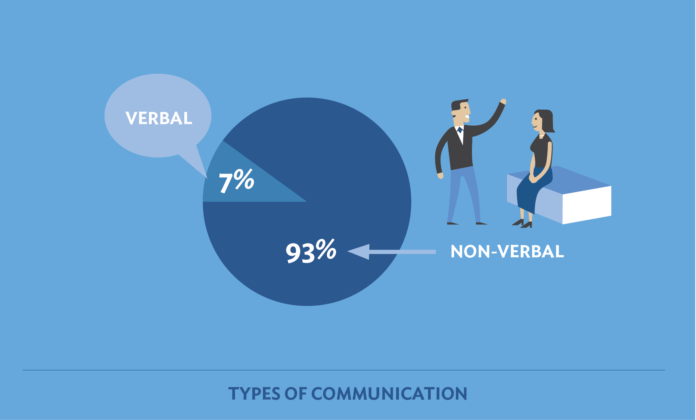What is the 7% rule?
Believe it or not, only 7% of all communication is conveyed verbally. That might sound very low, but factoring in vocal tonality, body language and other subtle cues this rule seems more plausible. There are various perspectives on the validity of this rule in relation to customer success.
UCLA professor Albert Mehrabian developed the 7% rule in 1971 when writing a book discussing his research on nonverbal communication. The conclusion from his studies determined that 55% of a salesperson’s credibility stemmed from their body language, 38% from their voice tonality, and a mere 7% from what they actually said. Its ramification on sales communication seemed clear- we should focus less on what we say and much more on how we say it.
The evolution of business transactions to the online space has resulted in an overhaul of what we consider the benchmarks of effective communication.
The 7% Rule and the Customer Experience
How do the general principles of the 7% rule impact a business’s customer service etiquette? Professor Mehrabian’s general conclusions about the importance of nonverbal signals indicate a desire for customers to not only hear the representative, but to see them. For instance, a steady eye gaze positively influences a representative’s believability. Another study supported the notion that smiling and displaying moderately friendly behavior is more likely to then be mirrored by the customers.
These principles have been applied to the customer experience since prior to the prevalence of computers and smartphones. Additionally, customers tend to find information more accurate when staff display nonverbal authority in the form of superior knowledge about a product and competitor product.
Customer Experience Today
Technological advances have allowed for the creation of online customer support video conferencing and chat technologies like Glia, which allows customers to meet support staff face-to-face and experience the same nonverbal cues as staff in brick and mortar retail stores. By seamlessly integrating social interaction with the online shopping experience, companies are better able to offer frictionless service to the self-service digital customers of today.
Companies are already bearing the fruits of their labor by converting to audio-video customer support. UK retailer Schuh saw a 400% conversion rate and a 10% increase in their average order values for customer support sessions involving video as opposed to merely text chats. In 2012, former Hertz CEO Mark Frissora credited their video kiosks that allow customers to live chat with a representative with a lower than expected first quarter loss and in line with the company’s expansion plans.
In short, the 7% rule proves that nonverbal cues matter. Trust is established through what is being said and the body language that supports it. With the rise of audio-visual online customer support, retail staff will undoubtedly utilize these age-old communication tools. A genuine smile and knowing how to frame your company’s product based on a customer’s needs goes a long way in creating a positive customer experience.





